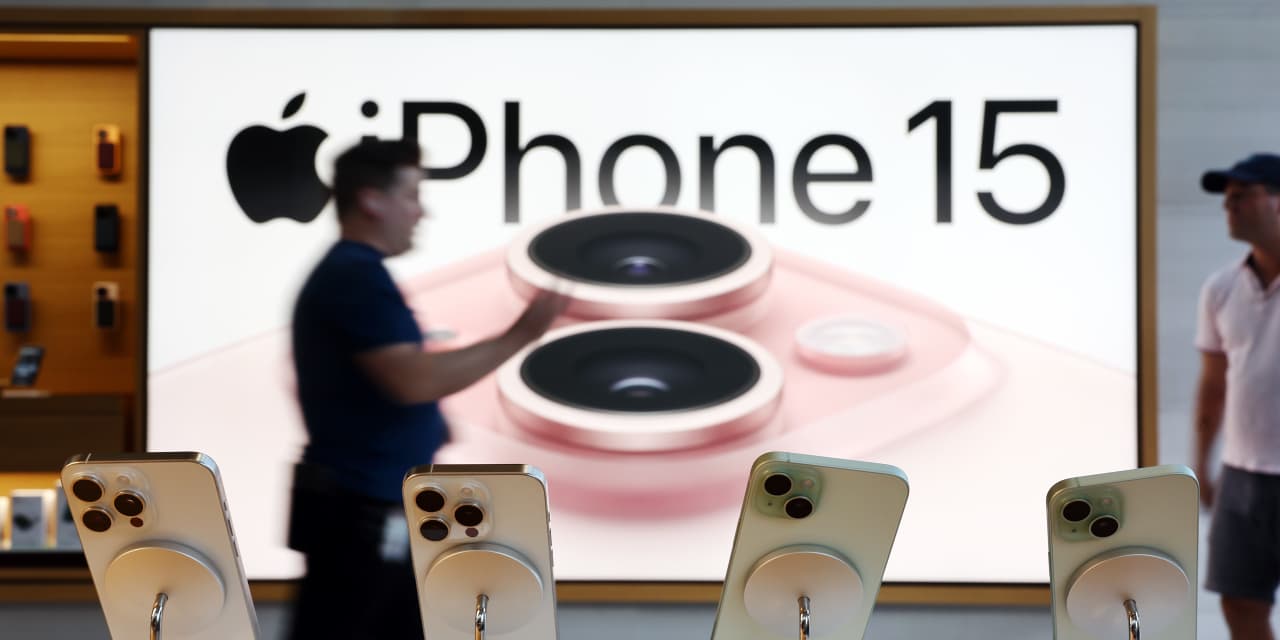Options premiums are so inexpensive right now that they’re making options look like a better way to play the market.
Instead of buying stocks to participate in what is looking to be an end-of-year rally, investors could simply buy bullish call options, which give the holder the right to buy an asset at a specific price within a set period. This makes sense in ways that should delight anyone who thinks about the world in risk and reward probabilities.
Options cost a fraction of the associated stock price, which means investors are risking less money than if they bought stock. For instance,
Apple’s
(ticker: AAPL) January $190 call costs $5.25, compared with $187.44 to buy a share of its stock. (Each options contract represents 100 shares, making the total cost $525.)
If you like mega-technology stocks but you’re not too enthused about buying anything that is trading near record levels, fret not. Buy some Apple calls and put the rest of the money in short-term Treasuries, which offer an annual yield of about 5%.
If stocks keep rallying, the calls will increase in value and pay for a whole lot of Yuletide cheer. If you’re wrong, and Santa Claus fails to visit Wall and Broad Streets—that is, the New York Stock Exchange—you lose only what you spent on the calls, which is a bargain compared with what you would have lost had you bought stock.
Apple’s $190 call is worth $20 if the stock is at $210 or more at expiration. Investors could then sell the calls for a nice profit and re-evaluate market conditions. If they then grow fearful—say, because the quiet talk of a 2024 recession grows louder around the January expiration—they could sell put options on Apple to position to buy it at a lower price. (Puts give the holder the right to sell a specific asset at a set price and time.)
The potential unhappy ending to the Apple stock-proxy trade—and it is a universal truth for the strategy—is if the stock rolls over, retracing the gains of the past few weeks. The money paid for the calls vanishes if the stock price is below the strike price at expiration.
Using options in lieu of stocks also demonstrates how investors should use the widely misunderstood
Cboe Volatility Index,
or VIX: Consider it a proxy for options prices rather than a measure of investor sentiment.
We continue to stand behind the maxim that when the VIX is low, it’s time to go, and when the VIX is high, it’s time to buy, but VIX sentiment signals are useful only when the VIX is at extremes. Otherwise it is best used to determine if the options market is having a sale on puts and calls.
At its current level of 14.16, the VIX is telegraphing that options prices are low. During the past year, the so-called fear gauge has ranged from 12.68 to 30.81.
All investors should pay attention to what is almost certainly a historic moment in the markets. If the market is truly immune to world affairs and keeps edging higher, the present will become a historical investor case study.
Our options-centric approach is designed to appeal to anyone worried a) that the market mob is mad to bid up stocks amid global chaos, b) that the Federal Reserve isn’t done raising rates, c) that ignoring high stock multiples is silly, and d) that the proverbial wall of worry has been built by a generation of investors who are too young to have experienced market stories with unhappy endings.
Let us not forget that the federal government is at risk of a shutdown because Congress is so unstable that it cannot agree on how to fund its operations.
Until those and other risks fade away, enjoy listening to the market strum its songs of fear and greed.
Email: [email protected]
Read the full article here


